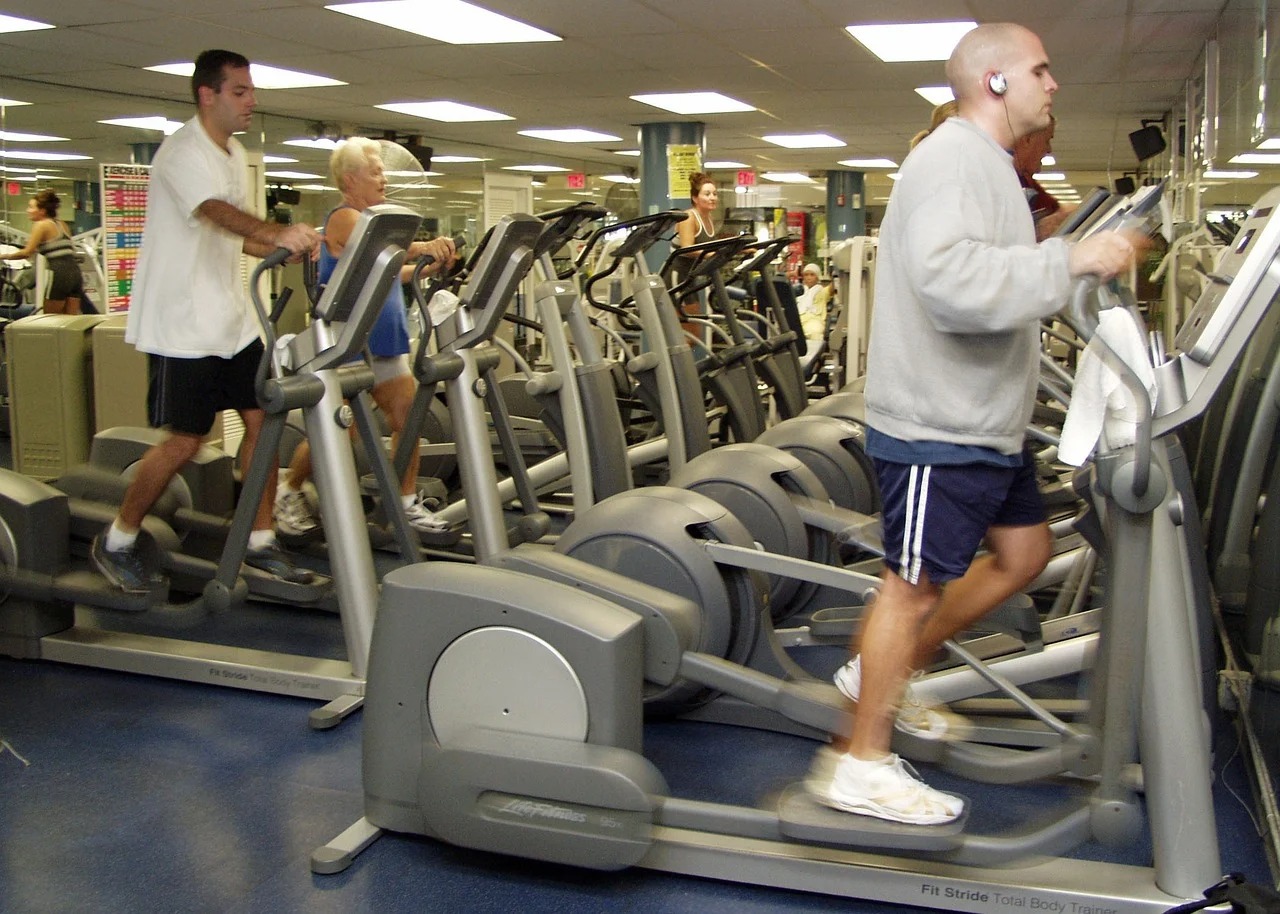Rows and rows of ellipticals at the gym never seem to go out of style, always filled with a variety of cardio exercises no matter what gym you go to. When it comes to selecting cardio equipment at the gym, there’s a place for every machine, depending on your goals. From treadmills to stair steppers, how do you know which cardio machine is best for achieving your personal goals? If you’re thinking about starting a regular cardio routine on an elliptical, this guide is for you. We’ll answer all of the most commonly asked questions, such as “What muscles does the elliptical work”? and “how often should I use the elliptical”? Let’s get started.
What is the elliptical?

Also known as an elliptical trainer or a cross trainer, an elliptical is a piece of cardio gym equipment that is designed to simulate the motion of walking, jogging, or running with impact on the joints. The speed can vary depending on how hard the user pushes, allowing you to go as fast or as slow as you like. Many elliptical machines also can vary in resistance, making it more difficult to push along and challenging your muscles as you go. The low-impact motion of the elliptical machine makes it a great choice for many people, including those with joint conditions.
What muscles does the elliptical work?

Lower body muscles
Beyond the benefits of cardio exercises, such as getting your heart rate up and burning calories, working out on the elliptical also effectively targets your lower body muscles. An elliptical targets your hamstrings, glutes, quads, and calves — all of which are involved in propelling your body forward throughout the workout. One study that examined the muscles used during an elliptical workout found that 32.6% of your glute muscles are engaged during this workout.
Upper body muscles
The arm handles that go along with the elliptical also target your upper body muscles at the same time as your lower body muscles. This workout is great if you want to target your tricep muscles as well as your shoulders. You can also target the Rhomboids and Trapezius muscles in your upper back, which retract and protract as you push and pull through the motion of the exercise.
Abs and core
Many people think that ab exercises like crunches are the only way to develop a strong core. However, cardio equipment such as the elliptical also can help strengthen your abdominal muscles. The elliptical primarily works three core muscles: the obliques, transverse abdominals, and the rectus andominis. This diversity of muscles engaged is great for strengthening your core as well as targeting belly fat. Although you cannot spot-reduce in weight loss, the calorie deficit you create from regular elliptical workouts can help to blast fat away.
How long and how often to do elliptical workouts

After learning about all of the muscles the elliptical targets, it’s pretty clear this is a great, well-rounded cardio exercise to try. If you’re thinking about starting a new cardio routine, where do you begin? Elliptical routines will vary from person to person, depending on your pre-established fitness level and cardio health. For beginners, starting slowly and working your way up to longer elliptical sessions can help you build up stamina and endurance. 10 to 15 minute sessions three times a week is a great place to start, allowing your body to acclimate slowly to a new routine.
If you already are switching from another cardio routine, you’ll likely be able to jump into longer sessions faster. For weight loss, aim for about 30 to 45 minute sessions three to five days a week. If your muscles are sore, alternating on-and-off days can allow your core, upper, and lower body muscules time to adjust to the routine.
Who should try the elliptical machine?
One thing to love about the elliptical machine is its low-impact effects. Whether you’re a beginner or advanced cardio expert, there’s a place for this gym equipment in everyone’s routine. It is also ideal for those with muscloskeletal conditions or those who are recovering from injuries. Unlike running which can be extremely taxing on the joints, the elliptical reduces the stress put on joints.
With this in mind, who should give the ellitpical a try? First and foremost, anyone looking to improve their cardiovascular health and fitness can benefit from giving the eliptical a try. It’s a great choice as part of a weight loss program as well, burning on average 270 to 400 calories per hour (depending on the user’s body weight). Anyone looking to improve balance, as well as tone upper and lower body muscles should also give the elliptical a try.





